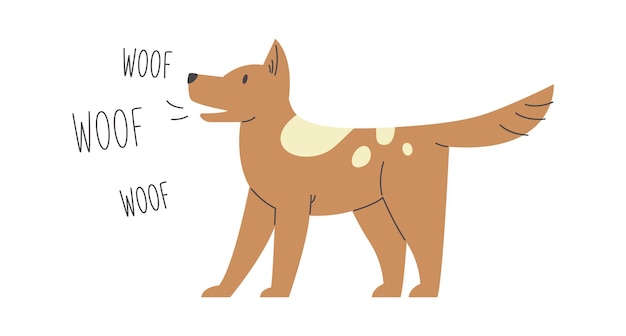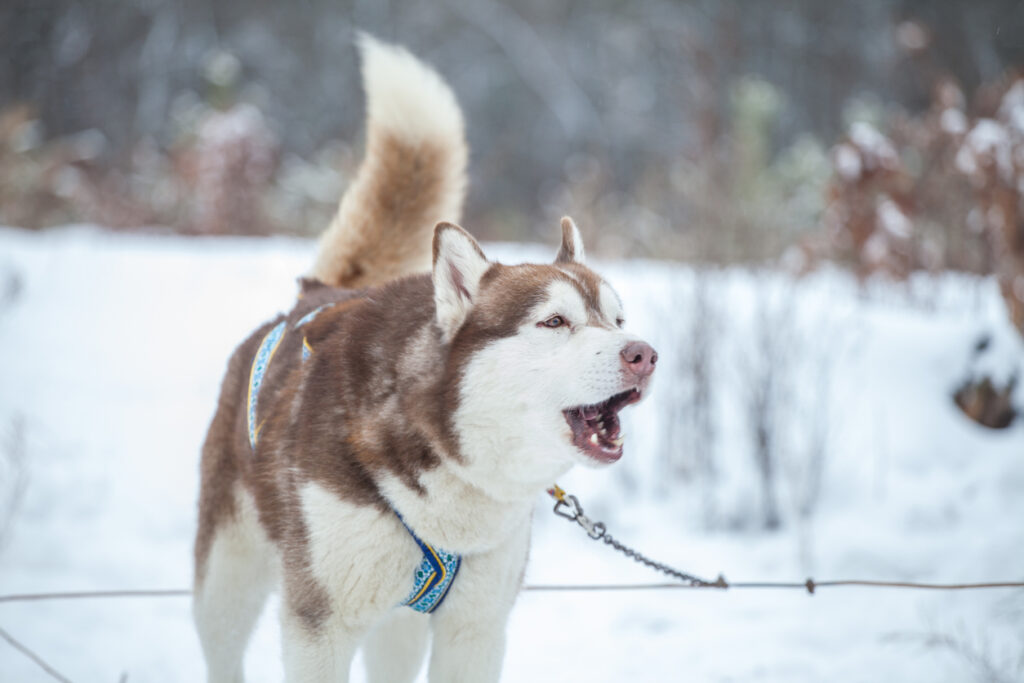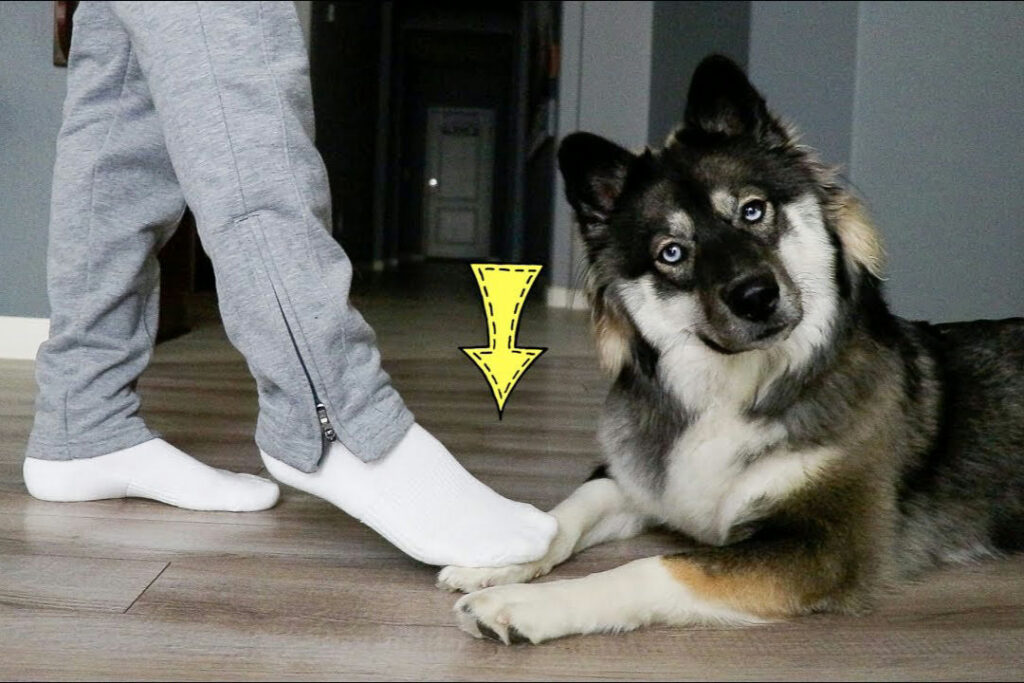Knowing What Your Dog Wants By The Sounds They Make

Did you know your dog’s barks are more than just noise? They form a complex language, with different pitches, patterns, and speeds conveying distinct emotions and intentions. By learning to decode these 18 common canine vocalizations, you can deepen your bond with your furry friend and finally understand what they’re trying to tell you.
1. The Classic “Woof”

The standard “woof” or “ruff” is a mid-pitched, balanced bark that serves as a dog’s all-purpose greeting and mild announcement. Owners hear this sound daily as a signal of curiosity, mild excitement, or a request for attention. For example, your dog might give a single, clear woof when you enter the room, when they want their leash, or when a small, non-threatening stimulus catches their eye outside. Vets and trainers generally consider the classic woof to be a sign of a social, emotionally stable dog that is looking to engage without being overly fearful or aggressive. It is the dog’s way of saying, “Hello, I’m here, and I’ve noticed something interesting.”
2. Rapid-Fire Barking

When a dog launches into a rapid, intense series of sharp barks, it’s an urgent alert or warning signal. This “alarm bark” is rooted in the ancestral pack behavior of calling attention to potential threats to the group. It typically sounds frantic and high in volume, and you might notice your dog is stiff or standing very still while performing it. This type of communication is often triggered by a perceived intrusion, like a stranger approaching the property, a siren, or a sudden, loud noise. While it is a protective, instinctual reaction, unchecked rapid-fire barking can easily become nuisance barking, requiring owners to use training techniques focused on redirection and teaching a reliable “quiet” command.
3. The Deep, Guttural Bark

A low-pitched, booming, and often slow-paced bark is a sign of territorial assertion or a serious deterrent. Studies have shown that a deeper pitch in barks is an acoustic illusion that naturally conveys a larger body size, regardless of the dog’s actual stature, making it intimidating. This type of bark is meant to warn off intruders or assert dominance over a space or resource. While it often sounds aggressive, it is fundamentally a strong warning signal, a dog’s way of saying, “I am defending this space, do not come closer.” Owners with guard breeds frequently hear this tone, which reflects a strong drive to protect their family and environment.
4. The High-Pitched Yap

High-pitched, often squeaky, and repetitive yaps are characteristic of excitement, nervousness, or frustrated overstimulation. They tend to be quick bursts of sound, and while small breeds are stereotyped for them, any dog can produce this vocalization when overwhelmed. A dog may yap uncontrollably during an energetic play session, when they see another dog they want to greet, or when they are highly anxious, such as when they anticipate a trip to the park. These vocalizations are simply intense enthusiasm or emotional turmoil expressed at full volume, and they often reflect a dog that needs help settling its energy or managing an overwhelming emotional state.
5. The Single Warning Bark

The solitary, short, and sharp “Woof!” followed by a pause is a highly controlled and intelligent form of communication. It signals a dog has noticed something unusual and is pausing to assess the situation before committing to a full-blown alarm. Owners might hear this when a shadow moves across the room, a door creaks, or a barely audible noise comes from outside. Trainers interpret this as a sign of an alert, cautious, and non-panicked dog. It is an invitation for the owner to investigate: the dog is asking, “Did you hear that too?” before deciding if further vocalization is necessary, showcasing self-control.
6. The Play Bark

A play bark is usually characterized by a higher pitch and a “choppy” rhythm, often accompanied by classic playful body language like a play bow (butt up, chest down), tail wagging, and bouncy movements. This sound is an explicit social invitation, with the dog trying to initiate a game, essentially saying, “Let’s have fun!” It’s common in all breeds and ages during games like fetch or wrestling. Crucially, the play bark lacks the harshness or sustained urgency of an alert or aggressive bark, and is often interspersed with happy yips or excited little whimpers. Recognizing it prevents owners from mistakenly suppressing a healthy and fun social behavior.
7. The Frustrated Bark

When a dog is unable to access a desired resource or action, they may resort to a short, sharp, and often relentless barking. This sound communicates impatience, annoyance, and being blocked from something they want. You’ll hear it when a dog is behind a fence and can’t reach another dog, when they can see a toy they can’t get to, or when they are tied up outside a store. It is a communication of unmet needs, and the consistency of the sound is what makes it frustrating to owners. Trainers suggest the best response is not to give in while the dog is barking, but to redirect their energy into a problem-solving task or structured, focused attention.
8. The Demand Bark

A demand bark is a persistent, focused, and often loud bark directed specifically at the owner, usually alternating with quick glances at the object of desire. It’s a classic learned behavior, the dog quickly figures out that this type of vocal persistence eventually results in getting attention, food, or access to the couch. It is highly manipulative and often starts small, like a short bark for food, and escalates to a full-blown fit if reinforced. Vets and behavioral specialists strongly advise owners to ignore this type of barking completely and only reward the dog when they choose a calmer form of communication, such as sitting quietly.
9. The Protective Growl-Bark Combo

This combination sound, where the bark is preceded or interspersed with a deep growl, is a strong escalation of a serious territorial or protective warning. The growl adds weight and seriousness, signaling an immediate shift into a defensive mode. The dog is communicating, “I am highly agitated, stay back, or I will act.” This vocalization is often heard when a stranger approaches a family member or when another dog gets too close to a high-value resource. Trainers advise owners to treat this sound with respect, as it is a crucial warning sign that the dog is feeling threatened and is giving clear, non-aggressive notice before resorting to a bite or snap.
10. The Lonely, Repetitive Bark

Dogs suffering from separation-related distress often produce a monotonous, repetitive, and often drawn-out barking pattern that is distinct from alert barking. It’s not a warning about an intruder, but an emotional cry for connection, essentially saying, “I am here, where is my family?” This type of barking often happens shortly after the owner leaves and continues at a steady pace. It is a signal of genuine emotional distress and loneliness, often accompanied by other signs of separation anxiety like pacing, destructiveness, or excessive salivation. The most effective solutions involve addressing the underlying emotional need rather than punishing the vocalization, such as providing mental stimulation before departure and gradual desensitization training.
11. The Excited “Welcome Home” Bark

A burst of joyful, enthusiastic, often high-pitched barking when an owner returns is a pure, uninhibited display of joy, excitement, and relief. It is usually coupled with an over-the-top display of happy body language: a frantic tail wag, spinning in circles, and perhaps a happy whine or two. This bark is a sincere emotional outpouring, communicating, “You’re back, and I’m overjoyed!” Though it can be loud, it is rarely a sign of aggression or deep distress. Trainers suggest acknowledging the dog calmly but avoiding an overly excited greeting in return, as this helps teach the dog to settle down faster and encourages a calmer, yet still loving, welcome.
12. The Howl-Bark Mix

Certain breeds, notably Beagles, Huskies, and other hounds, are famous for blending a traditional bark with a more sustained, vocalized howl, creating an eerie, distinctive sound. This howl-bark mix often occurs in response to high-frequency sounds like sirens, distant music, or the howls of other dogs. It is an ancestral form of long-distance communication, reflecting a dog’s attempt to connect vocally with its environment or an absent pack. Depending on the context, it can signal either anxiety, a strong desire to join in a communal chorus, or simple excitement. It’s a fascinating, instinctual sound that shows the dog tapping into its wolf heritage.
13. The “Talking” Bark

The “talking bark” refers to drawn-out, highly varied vocalizations that use human speech-like rhythms and intonations, often sounding like the dog is genuinely trying to argue or communicate verbally. Breeds like Huskies are well-known for this unique vocal repertoire. These sounds are often playful, protest-based, or attention-seeking, and they are essentially the dog’s attempt to mimic human communication patterns. Though they aren’t actual words, they clearly carry intent, often communicating protest or excitement. Scientists suggest this happens because dogs are highly attuned to their owners’ vocalizations and try to mirror the patterns they hear for engaging interaction.
14. The Alert Yip

A sudden, sharp, and very high-pitched single yip is one of the most instinctive and purely reflexive sounds a dog makes, signaling surprise or sudden, acute pain. You will hear this if a dog is accidentally stepped on, startled by a dropped object, or if they twist their body suddenly. It is a non-aggressive, immediate vocalization designed to get instant attention from a caregiver, essentially the canine equivalent of shouting “Ouch!” Owners should always treat an unexpected yip as a potential sign of injury or a severe fright. This sound is a direct, unfiltered signal of physical or psychological distress that demands immediate investigation.
15. The Whimper-Whine Bark

This sound, a mixture of a soft, rising whimper and a light, breathy bark, often indicates anxiety, fear, or a strong emotional need for comfort. Puppies use it to call for their mother, and adult dogs use it when they are feeling highly vulnerable, nervous, or need immediate attention and reassurance. It is much softer than a demand bark and often accompanied by submissive body language, like tucked tail or lowered head. This vocalization is a signal of deep dependency and emotional distress, not misbehavior. Recognizing it helps owners to avoid inadvertently reinforcing anxious behavior and instead provide calming, structured reassurance or environmental enrichment.
16. The Playful “Chuff” or Huff-Bark

The chuff is a short, breathy, half-snort, half-woof sound that is notably softer than a standard bark. It’s often used during light interaction or play as a low-level, friendly signal. Dogs may chuff when they are showing off a favorite toy, engaging in a light-hearted chase, or when they are excited but specifically trying to keep the interaction calm. Trainers see the chuff as an informal, gentle invitation to play that signals lightheartedness and curiosity without the intensity of full barking. It demonstrates that not all dog communication is loud; sometimes, a quiet, friendly puff of sound is all that’s needed to convey joy.
17. The Agitated Bark-Whine Mix

When a dog is experiencing inner conflict or high agitation, they often produce a bark that is overlaid with a distinct, anxious whine. This sound is common when a dog is restrained and sees a high-value stimulus they want to chase or engage with, like a squirrel running up a tree or another dog walking by. The bark signals the drive or desire (“I want to go!”), while the whine signals the frustration and hesitation caused by being held back (“I can’t go!”). Trainers note that this mix helps owners understand that their dog is experiencing a genuine emotional struggle between impulse and restriction, and often requires redirection or a structured training exercise to manage the internal stress.
18. The Silent “Mouth Bark”

The silent bark is not a sound at all, but the physical motion of barking, an exaggerated open-mouth gesture where no sound is released. This often occurs when dogs are highly excited but are actively trying to control their vocalization, perhaps because they have learned that audible barking is discouraged or not rewarded. It is a clear visual communication of suppressed enthusiasm, protest, or demand. The intent is the same as an actual bark, the dog is communicating a strong emotion, but the method is adapted to the human environment. It is a clear example of how adaptable dogs are in shaping their communication to their owners’ responses.
Understanding the nuances of your dog’s barks offers a fascinating window into their inner world, transforming noise into meaningful conversation. By paying attention to pitch, rhythm, and context, you can move from simply hearing barks to truly understanding your dog’s daily emotional and social needs.
This story The Language of Barks: 18 Sounds and What They Mean was first published on Daily FETCH


